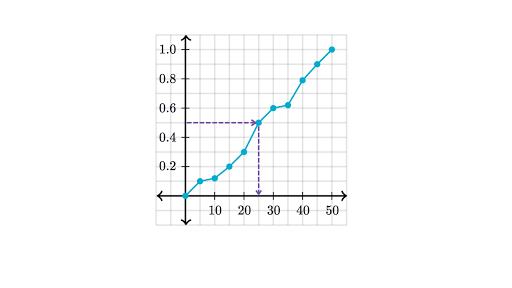The Figure Below Is a Cumulative Relative Frequency Graph
The figure below shows a cumulative relative frequency plot of 40 scores on a test given in a Statistics class. In order to be able to use Figure 122 Cumulative Normal Probability we must first find that area of the left tail cut off by the unknown number z.
Represented by a bar graph in descending order of their impact and the cumulative total is shown by a line graph.

. It lies in. Displays relative importance of causes of a problem. While we generally refer to cumulative incidence incidence proportion and incidence rate as measures of disease frequency they can be applied to any sort of occurrence.
The alcohol effects are denoted in the gray area mean. Since the total area under the density curve is 1 that area is 1 00250 09750. A histogram is basically used to represent data provided in a form of some groupsIt is accurate method for the graphical representation of numerical data distributionIt is a type of bar plot where X-axis represents the bin ranges while Y-axis gives information about frequency.
Helps to focus on causes. Which of the following conclusions can be made from the graph. A The horizontal nature of the graph for test scores of 60 and below indicates that those scores occurred most frequently.
Histogram introduced by Karl Pearson is a bar graph representing the frequency distribution on. The key thing to keep in mind is that either. Distinguish between vital few and trivial many.
Pareto charts help experts in following ways. This is the number we look for in the interior of Figure 122 Cumulative Normal Probability. For example treatments to cure or relieve disease conditions are also measured using the incidence proportion or rate as we will see in the example below.
Graph shows effects over time following 2 mg70 kg midazolam square 70 mg70 kg propofol circle and 50 μg70 kg fentanyl triangle on the DSST performance relative to placebo diamond and relative to the effect of sustained BAC levels of approximately 011.

Cumulative Relative Frequency Graph Problem Article Khan Academy

Analyzing A Cumulative Relative Frequency Graph Video Khan Academy

Analyzing A Cumulative Relative Frequency Graph Video Khan Academy
0 Response to "The Figure Below Is a Cumulative Relative Frequency Graph"
Post a Comment